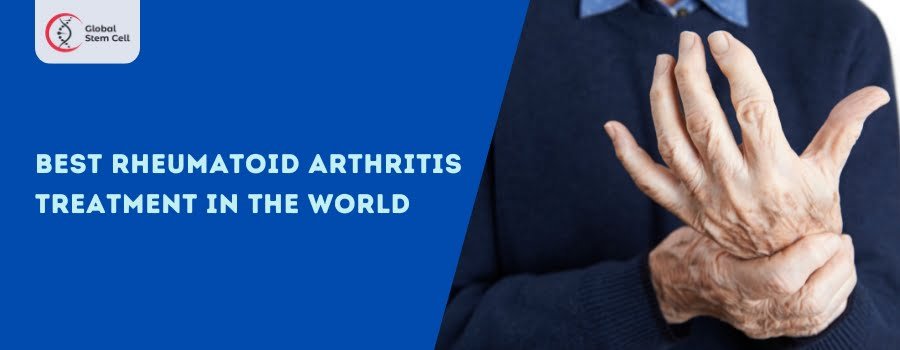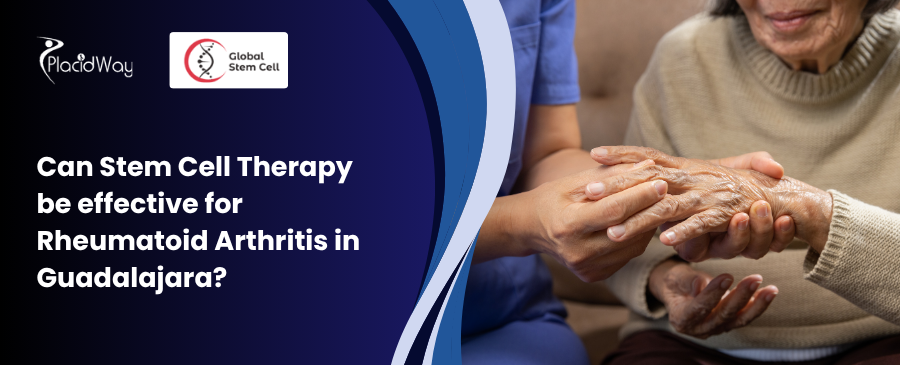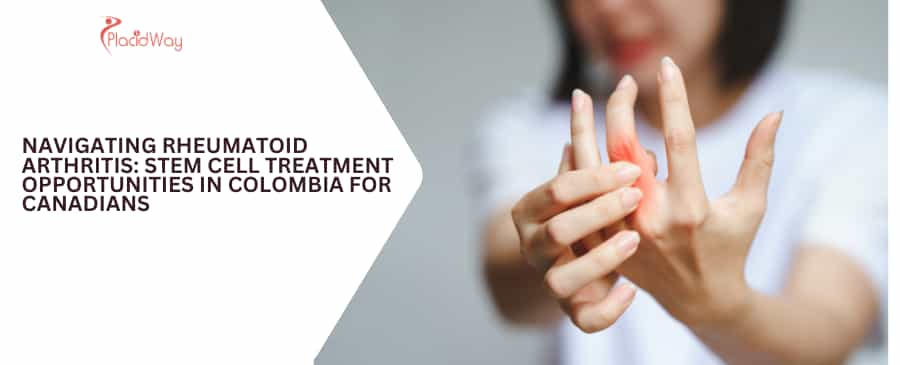
Rheumatoid arthritis (RA) is a tough condition that affects many people around the world. It can cause pain, swelling, and stiffness in the joints, making everyday tasks difficult. While treatments like medications and surgery exist, they may not always provide the relief needed. However, there’s new hope on the horizon: stem cell therapy.
In this blog post, we’ll explore how stem cell therapy is changing the game for RA patients, offering a promising alternative to traditional treatments. Let’s dive in and discover the potential of stem cell therapy in treating rheumatoid arthritis.
Table of Content
Understanding Rheumatoid Arthritis
Rheumatoid arthritis (RA) is a type of arthritis that happens when the body’s immune system mistakenly attacks healthy joints. This can lead to inflammation, pain, and stiffness in the joints, making it hard to move and do everyday activities. Unlike other types of arthritis, RA usually affects the same joints on both sides of the body, like both hands or both knees.
Causes and Symptoms: RA occurs when the immune system, which normally fights off infections, attacks the lining of the joints by mistake. Over time, this can damage the joints, cartilage, and bones. The exact cause of RA is not known, but it’s believed to involve a combination of genetic and environmental factors.
Common symptoms of RA include:
- Joint pain and swelling, especially in the mornings or after periods of inactivity.
- Stiffness in the joints, making movement difficult.
- Fatigue and weakness.
- Warmth and redness around affected joints.
- Joint deformities over time, if the condition is not treated.
Diagnosis: Diagnosing RA usually involves a combination of medical history, physical examination, blood tests, and imaging studies like X-rays or MRI scans. Early diagnosis and treatment are important to help manage symptoms and prevent further joint damage.
How stem cell therapy is revolutionizing the field of rheumatology?
Stem cell therapy is emerging as a promising treatment option in the field of rheumatology, offering new hope for patients with conditions like rheumatoid arthritis (RA), osteoarthritis, and other autoimmune disorders. Unlike traditional treatments that primarily focus on managing symptoms, stem cell therapy aims to address the underlying causes of these conditions by harnessing the regenerative potential of stem cells. Here’s how stem cell therapy is revolutionizing rheumatology:
1. Regenerative Potential
- Stem cells have the unique ability to develop into various types of cells in the body, including bone, cartilage, and muscle cells. This regenerative potential makes them an attractive option for repairing damaged tissues and promoting healing in arthritic joints.
- By introducing stem cells into affected joints, researchers believe they can stimulate the growth of new, healthy tissue, potentially reversing the damage caused by conditions like RA and osteoarthritis.
2. Modulating the Immune System
- In autoimmune disorders like RA, the immune system mistakenly attacks healthy tissues, leading to inflammation and joint damage. Stem cell therapy offers a promising approach to modulate the immune system and reduce inflammation.
- Stem cells can help regulate immune responses, suppressing the abnormal immune activity responsible for attacking joint tissues. This immunomodulatory effect may help to alleviate symptoms and slow down the progression of autoimmune diseases.
3. Minimally Invasive Procedures
- Stem cell therapy for rheumatological conditions typically involves minimally invasive procedures, such as injections directly into the affected joints.
- Compared to traditional treatments like surgery, stem cell therapy offers a less invasive alternative with potentially fewer risks and shorter recovery times.
4. Personalized Medicine
- Stem cell therapy can be tailored to each patient’s individual needs, offering a personalized approach to treatment.
- By isolating and culturing the patient’s own stem cells (autologous stem cell therapy), researchers can minimize the risk of rejection and maximize the therapeutic benefits.
5. Potential for Long-term Relief
- While conventional treatments for rheumatological conditions often focus on symptom management, stem cell therapy holds the promise of providing long-term relief by addressing the underlying causes of the disease.
- By promoting tissue regeneration and modulating immune responses, stem cell therapy may offer sustained improvements in joint function, pain relief, and quality of life for patients with rheumatological disorders.
Best Hospitals for Stem Cell Treatment for Rheumatoid Arthritis
Several hospitals and clinics around the world specialize in providing stem cell treatments for RA patients. Here’s a detailed overview of some of the leading facilities:
Vega Stem Cell Clinic – Bangkok, Thailand:
- Located in Bangkok, Thailand, Vega Stem Cell Clinic is renowned for its expertise in stem cell therapy for various medical conditions, including rheumatoid arthritis.
- The clinic offers state-of-the-art facilities and a team of experienced medical professionals who specialize in stem cell research and treatment.
- Patients receive personalized care and comprehensive treatment plans tailored to their specific needs.
- Vega Stem Cell Clinic follows strict quality standards and ethical guidelines to ensure the safety and efficacy of stem cell treatments.
Kobinia Med – Austria:
- Kobinia Med, situated in Austria, is a leading medical center known for its innovative approach to regenerative medicine, including stem cell therapy for rheumatoid arthritis.
- The clinic employs cutting-edge technologies and advanced techniques to deliver optimal results for patients with RA.
- Kobinia Med boasts a team of highly skilled physicians and researchers who are dedicated to advancing the field of stem cell therapy and improving patient outcomes.
- The clinic prioritizes patient safety and satisfaction, providing comprehensive support and follow-up care throughout the treatment process.
Stem Health – Guadalajara, Mexico:
- Stem Health, located in Guadalajara, Mexico, is a premier destination for stem cell therapy, offering specialized treatments for rheumatoid arthritis and other autoimmune disorders.
- The clinic features state-of-the-art facilities and a multidisciplinary team of medical professionals with expertise in regenerative medicine.
- Stem Health utilizes cutting-edge stem cell technologies and personalized treatment protocols to address the unique needs of each patient.
- The clinic is committed to delivering exceptional care and ensuring positive outcomes for individuals seeking relief from RA symptoms.
SPORTMED – Sports Medicine and Stem Cell Clinic in Guadalajara, Mexico:
- SPORTMED is a renowned sports medicine and stem cell clinic located in Guadalajara, Mexico, known for its expertise in treating musculoskeletal conditions, including rheumatoid arthritis.
- The clinic offers a comprehensive range of stem cell therapies tailored to address the specific needs of RA patients, with a focus on promoting tissue regeneration and reducing inflammation.
- SPORTMED boasts a team of skilled physicians and specialists who collaborate to deliver personalized treatment plans and ensure optimal outcomes for patients.
- With a commitment to excellence and patient-centered care, SPORTMED provides a supportive environment for individuals seeking innovative solutions for managing RA symptoms.
Kyron Stem Cells – Colombia:
- Kyron Stem Cells, located in Colombia, is a leading stem cell therapy center specializing in regenerative treatments for various medical conditions, including rheumatoid arthritis.
- The clinic offers advanced stem cell therapies that aim to repair damaged tissues, modulate immune responses, and alleviate RA symptoms.
- Kyron Stem Cells is staffed by a team of experienced physicians and researchers who are dedicated to advancing the field of regenerative medicine and improving patient outcomes.
- The clinic adheres to strict quality standards and follows rigorous safety protocols to ensure the efficacy and safety of stem cell treatments for RA patients.
StemRx Bioscience Solutions in Mumbai, India
- StemRx Bioscience Solutions, situated in Mumbai, India, is a leading provider of stem cell therapy for rheumatoid arthritis and other autoimmune disorders.
- The clinic offers innovative stem cell treatments that aim to reduce inflammation, regenerate damaged tissues, and improve joint function in RA patients.
- StemRx Bioscience Solutions is equipped with state-of-the-art facilities and a team of skilled medical professionals who specialize in regenerative medicine.
- With a commitment to excellence and patient care, the clinic provides comprehensive support and follow-up services to ensure the best possible outcomes for individuals seeking relief from RA symptoms.
Cost of Stem Cell Treatment for Rheumatoid Arthritis
The cost of stem cell treatment for rheumatoid arthritis (RA) can vary widely depending on several factors, including the location of the treatment center, the type of stem cell therapy used, the extent of treatment required, and additional services included in the treatment package. Generally, stem cell therapy for RA is considered a specialized procedure that may involve multiple sessions or follow-up treatments.
Here’s a rough estimate of the cost range for stem cell treatment for rheumatoid arthritis:
| Region | Cost Range (USD) |
|---|---|
| India | $5,000 – $10,000 |
| Colombia | $6,000 – $12,000 |
| Thailand | $6,000 – $11,000 |
| Mexico | $5,000 – $10,000 |
| Austria | $10,000 – $20,000 |
| United States | $20,000 and above |
Procedure of Stem Cell Treatment for Rheumatoid Arthritis
The procedure of stem cell treatment for rheumatoid arthritis (RA) typically involves several steps, from initial evaluation to follow-up care. While specific protocols may vary depending on the treatment center and the type of stem cell therapy used, the following is a general outline of the procedure:
1. Initial Consultation and Evaluation:
- The process begins with an initial consultation with a healthcare provider specializing in stem cell therapy or rheumatology.
- During this consultation, the patient’s medical history, symptoms, and previous treatments for RA are reviewed.
- A thorough physical examination may be conducted to assess the severity of joint damage and determine the suitability for stem cell therapy.
2. Pre-Treatment Preparation:
- Before the stem cell treatment, the patient may undergo additional diagnostic tests, such as blood tests, imaging studies (X-rays, MRI), and joint assessments, to evaluate the extent of joint damage and disease activity.
- Based on the evaluation results, a personalized treatment plan is developed, outlining the specific type of stem cell therapy and the number of sessions required.
3. Stem Cell Collection:
- In autologous stem cell therapy, which is the most common approach for treating RA, stem cells are harvested from the patient’s own body. This typically involves collecting stem cells from bone marrow or adipose (fat) tissue.
- The stem cell collection procedure is usually performed under local anesthesia in a sterile environment, such as an operating room or a specialized clinic.
4. Stem Cell Processing and Isolation:
- After the stem cells are collected, they are processed and isolated in a laboratory to concentrate the stem cell population.
- This step may involve filtering, centrifugation, and other techniques to extract and purify the stem cells from the collected tissue.
5. Stem Cell Injection:
- Once the stem cells are prepared, they are injected into the affected joints using imaging guidance (e.g., ultrasound or fluoroscopy) to ensure precise placement.
- The injection procedure is typically performed on an outpatient basis, and patients may return home the same day.
6. Post-Treatment Monitoring and Follow-Up:
- After the stem cell injection, patients are closely monitored for any immediate reactions or side effects.
- Depending on the treatment protocol, patients may require additional sessions of stem cell therapy at scheduled intervals.
- Follow-up appointments are scheduled to assess treatment response, monitor joint function, and adjust the treatment plan as needed.
7. Rehabilitation and Supportive Care:
- In conjunction with stem cell therapy, patients may undergo rehabilitation exercises, physical therapy, and lifestyle modifications to optimize joint function and mobility.
- Supportive care measures, such as pain management and anti-inflammatory medications, may be prescribed to alleviate symptoms and improve overall well-being.
8. Long-Term Management:
- Long-term management of rheumatoid arthritis may involve ongoing monitoring, medication management, and lifestyle modifications to maintain joint health and prevent disease progression.
- Regular follow-up appointments with healthcare providers are recommended to assess treatment efficacy, monitor for any potential complications, and make adjustments to the treatment plan as necessary.
FAQs about Stem Cell Treatment for RA
What is stem cell treatment for rheumatoid arthritis (RA)?
Stem cell treatment for rheumatoid arthritis involves using stem cells to help repair damaged tissues in the joints and modulate the immune system to reduce inflammation. It is a promising approach that aims to address the underlying causes of RA and promote healing.
How does stem cell treatment work for rheumatoid arthritis?
Stem cell treatment for RA typically involves harvesting stem cells from the patient’s own body, processing and isolating them, and then injecting them into the affected joints. The stem cells may help regenerate damaged tissues and modulate immune responses, leading to reduced inflammation and improved joint function.
Is stem cell treatment safe for rheumatoid arthritis?
Stem cell treatment for RA is generally considered safe, especially when using the patient’s own cells (autologous stem cell therapy). However, as with any medical procedure, there are potential risks and side effects, such as infection, bleeding, or allergic reactions. It’s essential to discuss the potential risks and benefits with a healthcare provider before undergoing stem cell therapy.
What are the potential benefits of stem cell treatment for rheumatoid arthritis?
The potential benefits of stem cell treatment for RA include reduced joint pain and inflammation, improved joint function and mobility, and possibly slowing down the progression of the disease. Stem cell therapy may offer an alternative or adjunctive approach to traditional treatments for RA.
How long does it take to see results from stem cell treatment for rheumatoid arthritis?
The timeframe for seeing results from stem cell treatment for RA can vary from patient to patient. Some individuals may experience improvements in symptoms within a few weeks or months, while others may require longer for noticeable changes. It’s essential to have realistic expectations and be patient with the treatment process.
Are there any alternative treatments for rheumatoid arthritis besides stem cell therapy?
Yes, there are several alternative treatments for rheumatoid arthritis, including medications (such as nonsteroidal anti-inflammatory drugs or disease-modifying antirheumatic drugs), physical therapy, lifestyle modifications (such as exercise and diet), and complementary therapies (such as acupuncture or herbal supplements).
Ready to explore the transformative potential of stem cell therapy for rheumatoid arthritis? Contact us today to learn more and take the first step towards a brighter, pain-free future!





